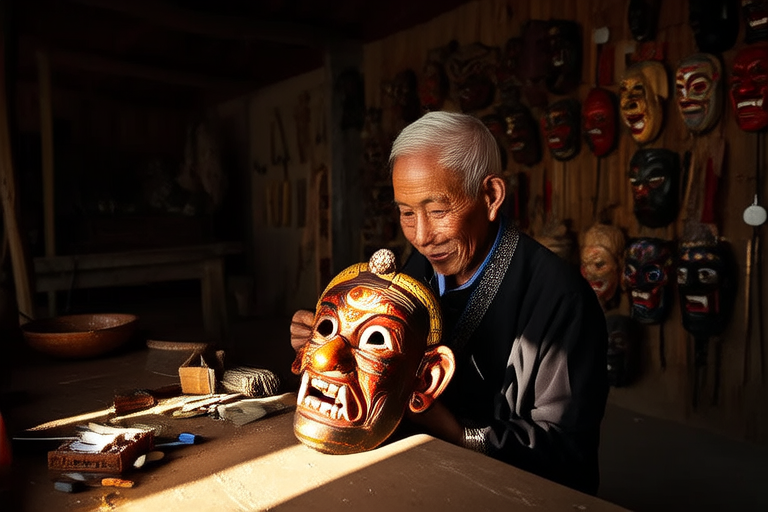Cultural Customs Unveiled: Discovering Hidden Traditions Around the Globe

Cultural Customs Unveiled: Discovering Hidden Traditions Around the Globe
Welcome to a journey through the world’s lesser-known cultural traditions. In this article, we will explore unique customs that have been passed down through generations, enriching our understanding of diverse societies. From sacred rituals to everyday practices, these traditions reflect the deep connection between people and their environment, history, and beliefs. By delving into these hidden gems, we can gain a richer appreciation for the tapestry of human experience.
The Festival of Yule Logs: A Nordic Winter Tradition
In the heart of winter, when the days grow short and the nights long, the Nordic countries celebrate the Festival of Yule Logs. This ancient tradition dates back to Viking times, where the burning of large wooden logs was believed to ward off evil spirits and bring warmth and light during the darkest months. The log, often decorated with ribbons and adorned with symbolic items like coins or salt, is carefully selected and brought into the home with great ceremony. As it burns throughout the night, families gather around, sharing stories, singing songs, and enjoying traditional foods like lutefisk and akvavit. Today, the festival continues to be a cherished part of Scandinavian culture, symbolizing community, resilience, and the enduring power of nature.
The Fire Walking Ceremony of Greece: A Test of Faith and Courage
Nestled among the rugged hills of Greece lies the village of Agia Triada, home to the annual Fire Walking Ceremony. Held on the feast day of Saint Constantine and Saint Helen, this daring ritual involves participants walking barefoot across a bed of hot coals. Originating from pre-Christian times, the ceremony was later incorporated into Christian celebrations as a test of faith and courage. To prepare, participants fast for three days and attend special prayers, believing that by doing so they will be protected from harm. As the flames roar and the coals glow red-hot, the brave souls step forward, their faces set in determination. For those who succeed, the experience is said to bring good fortune and healing, while also strengthening their bond with the community. Despite modernization, this centuries-old tradition remains a powerful reminder of the enduring strength of spiritual belief.
The Lantern Festival of China: Celebrating Unity and Harmony
Each year, as the first full moon of the lunar calendar rises, millions of Chinese people come together to celebrate the Lantern Festival. This vibrant event, which marks the end of the Spring Festival, features colorful lanterns adorning streets and public spaces, creating a magical atmosphere. Children carry paper lanterns shaped like animals, flowers, and mythical creatures, while adults enjoy sweet rice balls known as tangyuan, symbolizing family unity and harmony. The festival also includes dragon and lion dances, fireworks displays, and riddle contests, all designed to entertain and inspire. Rooted in ancient agricultural practices, the Lantern Festival has evolved into a beloved celebration of cultural heritage, reinforcing the values of cooperation and joy that define Chinese society.
The Maori Haka: A Dance of Challenge and Respect
In the lush landscapes of New Zealand, the Maori people perform the haka, a powerful dance that combines song, chanting, and vigorous movements. Traditionally performed before battles to intimidate enemies, the haka has since taken on new meanings, serving as a display of respect, unity, and pride. Performed at significant events such as weddings, funerals, and international sports matches, the haka is a testament to the resilience and cultural richness of the Maori people. Each movement, from stomping feet to thrusting tongues, carries deep symbolic meaning, telling the story of ancestors and land. Today, the haka is recognized worldwide, inspiring awe and admiration for its raw energy and emotional intensity.
The Secret of the Japanese Tea Ceremony: A Path to Serenity
Hidden away in quiet tea houses across Japan, the ancient art of the tea ceremony offers a glimpse into a world of tranquility and mindfulness. Originating in the 16th century, the ceremony follows strict rules and protocols, guiding participants through the preparation and consumption of matcha, a finely ground green tea. Every element, from the precise pouring of water to the delicate placement of utensils, is executed with precision and reverence. Participants sit in a circle, facing one another, and engage in respectful conversation, focusing on the present moment. The tea ceremony is more than just a beverage; it is a spiritual practice that promotes harmony, respect, and self-awareness. Even in today’s fast-paced world, the ceremony continues to be a cherished tradition, offering solace and serenity to those who participate.
The Conclusion: Embracing Cultural Diversity
As we have explored these hidden traditions from around the globe, it becomes clear that each custom carries within it the essence of a community’s identity and heritage. From the fiery coals of Greece to the serene gardens of Japan, these practices remind us of the rich tapestry of human experience. By embracing and celebrating these traditions, we not only honor the past but also contribute to a future where cultural diversity is cherished and respected. Let us continue to seek out and share these hidden gems, fostering a deeper understanding and appreciation of our shared humanity.